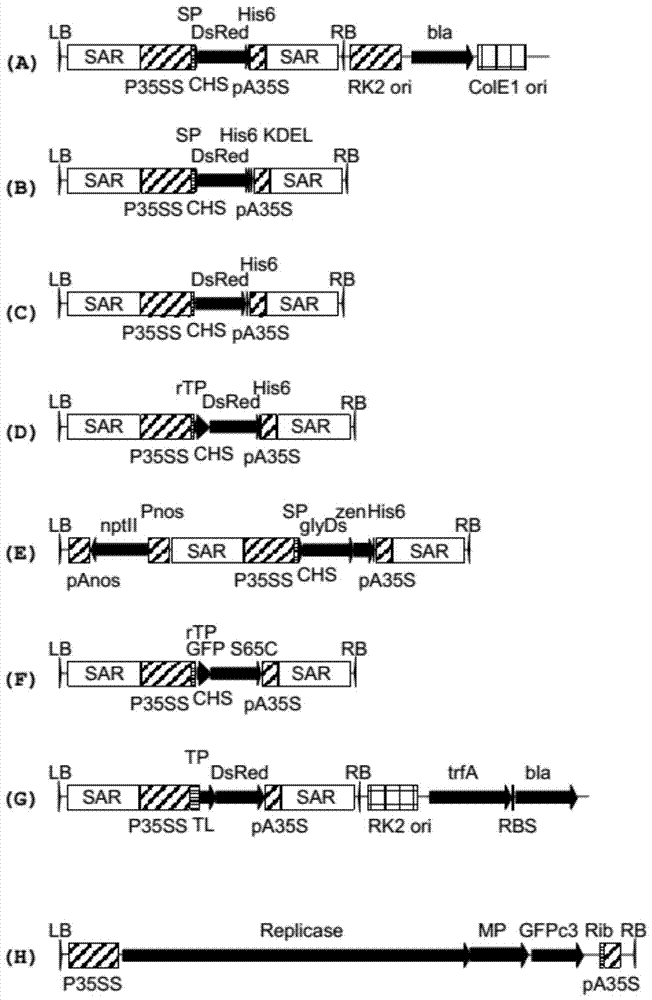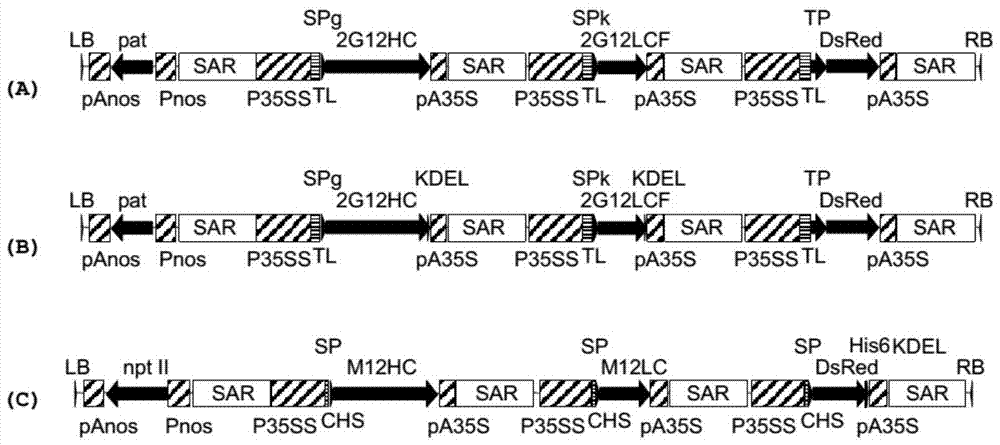Method for producing and culturing plant cell packs
A technology of plant cells and growth medium, applied in the fields of botany equipment and methods, biochemical equipment and methods, plant regeneration, etc., can solve the problems of dependent production, high production cost, low transformation efficiency, etc.
- Summary
- Abstract
- Description
- Claims
- Application Information
AI Technical Summary
Problems solved by technology
Method used
Image
Examples
Embodiment 1
[0132] Transient expression in suspensions compared to transient expression in cell packs
[0133] To evaluate the production of transient recombinant proteins in the cell packs of the present invention, the transient expression of DsRed and antibody 2G12 in Agrobacterium-infiltrated cell packs was compared with the prior art method of co-cultivating cell suspensions with Agrobacterium in liquid culture Compare.
[0134] Using recombinant Agrobacterium (strain GV3101::pMP90RK), which carries the expression cassettes for the heavy and light chains of a human antibody (2G12) and for plastid-targeting red fluorescent protein (DsRed) on the same T-DNA ) binary vector pTRAp-2G12FER-Ds of the expression cassette. Both 2G12 genes contain the KDEL sequence for ER-retaining antibodies ( figure 2 B). This KDEL sequence was deliberately used to avoid antibody secretion in order to directly compare the productivity of cell packs and suspension cells.
[0135] Agrobacterium strains fo...
Embodiment 2
[0144] Transient Expression of Plasmodium falciparum Antigens in Cell Packs
[0145] To test whether cell stacks can be used to produce malaria antigens, different proteins of P. falciparum were transiently produced.
[0146] Recombinant Agrobacterium strains containing a binary vector with an expression cassette for an ER-retained carboxy-terminal fragment of Msp1 (p38, p33 and p19) from Plasmodium falciparum and a plastid-targeted DsRed Two expression boxes ( Figure 4 ). Bacteria were grown and prepared as described in Example 1. Agrobacterium infiltration suspensions were serially diluted from OD1 to OD0.0625 before infecting plant cells.
[0147] Three day old BY-2 suspension cultures were used to grow cell packs as described in Example 1. The cell stack was cut into approximately 5 mm × 5 mm × 10 mm slices ( Figure 7 A). Six slices were transferred to Petri dishes and infiltrated dropwise with Agrobacterium suspensions of different optical densities to saturation ...
Embodiment 3
[0151] Using cell stacks for screening applications
[0152] Since cell packs are highly homogenized, they are also ideal for sieving purposes. Therefore, it was demonstrated in this example by evaluating the effect of the employed Agrobacterium strains and different expression vectors on transient product accumulation. Two different expression vectors were used: the binary vector pUTA-TPrfp ( figure 1 G); the binary vector pTRBO-G ( figure 1 H) (J.A.Lindbo, "TRBO: a high-efficiency tobaco mosaic virus RNA-based overexpression vector", Plant Phys145:1232-1240, 2007). Each vector was introduced into two different Agrobacterium strains. The standard vector pUTA-TPrfp was introduced into GV3101::pMP90RK and EHA105; the viral vector pTRBO-G was introduced into GV2260 and EHA105 (R.Helens et al., "A guide to Agrobacterium binary Ti vectors", TIBS5:446-451 ,2000).
[0153] pTRA-rTPgfp in GV3101::pMP90RK was used as a positive control ( figure 1 F). Liquid cultures of GV-pU...
PUM
| Property | Measurement | Unit |
|---|---|---|
| diameter | aaaaa | aaaaa |
| height | aaaaa | aaaaa |
| density | aaaaa | aaaaa |
Abstract
Description
Claims
Application Information
 Login to View More
Login to View More - R&D
- Intellectual Property
- Life Sciences
- Materials
- Tech Scout
- Unparalleled Data Quality
- Higher Quality Content
- 60% Fewer Hallucinations
Browse by: Latest US Patents, China's latest patents, Technical Efficacy Thesaurus, Application Domain, Technology Topic, Popular Technical Reports.
© 2025 PatSnap. All rights reserved.Legal|Privacy policy|Modern Slavery Act Transparency Statement|Sitemap|About US| Contact US: help@patsnap.com



